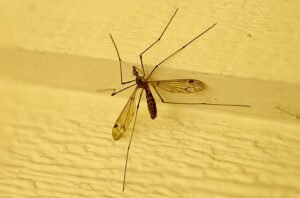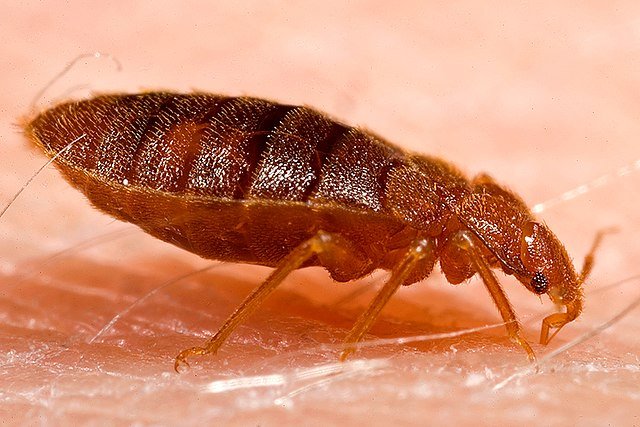Crane Flies (Family Tipulidae): Identification, Risks & Control
 The Crane Flies (Family Tipulidae) are long-legged insects often mistaken for giant Mosquitoes (Culicidae). Their fragile bodies, slender wings, and tendency to fly clumsily around lights make them familiar in homes, gardens, and fields across the globe. Despite their intimidating size, crane flies do not bite or sting humans.
The Crane Flies (Family Tipulidae) are long-legged insects often mistaken for giant Mosquitoes (Culicidae). Their fragile bodies, slender wings, and tendency to fly clumsily around lights make them familiar in homes, gardens, and fields across the globe. Despite their intimidating size, crane flies do not bite or sting humans.
Adult crane flies are harmless, but their larvae—commonly called leatherjackets—can be significant pests in lawns, pastures, and agricultural fields. Feeding on grass roots and seedlings, they can weaken turf and reduce crop productivity. This duality makes them an insect of both nuisance value indoors and economic importance outdoors.
Identification
Adults: Typically 10–60 mm in length, with very long, delicate legs.
Color: Light brown to gray, slender body resembling an oversized mosquito.
Wings: Transparent, held outstretched when at rest.
Larvae (Leatherjackets): Worm-like, grayish-brown, legless, living in soil and feeding on plant roots.
Pupae: Found in soil, dark brown, with spiny projections.
Field tip: The lack of a proboscis differentiates them from Mosquitoes, helping to debunk the myth that crane flies are “giant mosquitoes.”
Biology and Lifecycle
Eggs: Laid in moist soil or turf; hatch within 1–2 weeks.
Larvae: Feed underground on roots and organic matter for several months.
Pupae: Develop in the soil before adults emerge.
Adults: Live only a few days to mate and lay eggs, often clustering around lights at night.
Generations per year: One to two, depending on climate.
Overwintering stage: Typically as larvae in the soil.
Ecology and Distribution
Found worldwide, with greatest diversity in temperate and humid regions.
Common in Europe, North America, Asia, and Australia.
Adults are drawn to light and moisture, often entering homes accidentally.
Larvae thrive in lawns, golf courses, pastures, and agricultural lands.
Risks and Damage
Crane flies pose different risks depending on the life stage:
Adults: Harmless indoors, but a nuisance when swarming around lights.
Larvae (Leatherjackets):
Damage turfgrass by eating roots.
Weaken seedlings in agricultural fields.
Create bare patches in lawns.
Attract birds and wildlife that dig up turf searching for them.
In comparison, while Fruit Flies and Fungus Gnats annoy homeowners indoors, crane fly larvae compete with pests like White Grubs in terms of outdoor turf and root damage.
Signs of Infestation
Large numbers of crane fly adults around lights in late summer or autumn.
Bare or thinning patches of grass in lawns or fields.
Increased bird activity pecking at turf to feed on larvae.
Soil inspection revealing grayish-brown leatherjackets.
Household and Garden Control
Exclusion: Keep windows screened and doors sealed to reduce indoor entry.
Lighting: Reduce outdoor lighting during peak adult flights.
Water management: Avoid overwatering lawns, as larvae thrive in moist soil.
Biological control: Nematodes (Steinernema spp.) can reduce larval populations.
Mechanical control: Scarifying turf exposes larvae to predators.
Targeted insecticides: May be used in severe lawn or agricultural infestations, though timing is crucial—most effective against young larvae.
Agricultural and Professional Control
Monitoring: Regular soil sampling to detect larval populations.
Cultural practices: Aeration and drainage improvements reduce larval survival.
Biological control: Beneficial nematodes and fungal pathogens show promise.
Chemical control: Applied sparingly due to environmental considerations.
IPM strategy: Focuses on soil health, proper irrigation, and biological control agents rather than heavy reliance on chemicals.
In agricultural fields, crane fly larvae may reduce yields of crops like cereals and pasture grasses, making them a significant pest for farmers.
Final Thoughts
The Crane Fly (Family Tipulidae) is one of those insects that highlights how appearance can be misleading. With their long legs and mosquito-like shape, they often frighten people who think they are giant biting insects. In truth, adults are completely harmless—more nuisance than threat.
The real story lies beneath the soil. The larval stage, known as the leatherjacket, is where the economic damage happens. Feeding on turf and crop roots, they compete with pests such as white grubs, making them a serious issue in lawns, golf courses, and agriculture.
Compared to other nuisance fliers like Mosquitoes (Culicidae), Fruit Flies (Drosophilidae), and Fungus Gnats (Sciaridae), crane flies do not spread diseases or infest kitchens. However, when lawns start browning and crops weaken, crane fly larvae can be just as concerning as indoor pests like Drain Flies, or stored product pests such as Cigarette Beetles and Drugstore Beetles.
The best approach is Integrated Pest Management (IPM)—combining cultural practices, biological agents like nematodes, and careful water management. By maintaining healthy soil and preventing overwatering, homeowners and farmers can keep crane fly populations in check without excessive chemical use.
Ultimately, crane flies are a reminder that not every insect that looks threatening is dangerous—but sometimes, the hidden stages of their life cycle can bring the real challenge.
Disclaimer
This article is for informational purposes only. Pest control laws and approved chemicals vary by country. For best results and legal safety, we strongly recommend contacting a licensed pest control professional in your local area. Always make sure that the pest control technician is properly certified or licensed, depending on your country’s regulations. It’s important to confirm that they only use approved products and apply them exactly as instructed on the product label. In most places in Europe, UK, or USA, following label directions is not just best practice—it’s the law.
Author
Nasos Iliopoulos
MSc Agronomist & Certified Pest Control Expert
Scientific Director, Advance Services (Athens, Greece)
Licensed Pest Control Business – Ministry of Rural Development & Food (GR)
References
Wikipedia – Crane Flies
Britannica – Crane Flies(Tipulidae)

